-
Expedited exploration on several priority targets revealed in the detailed aeromagnetic survey, including:
-
two 600 metres (diameter) magnetic “eye” features NNW of Bulgandry; and a third similarly sized magnetic feature adjacent;
-
an 8km length of ENE-trending magnetic lineaments associated with the prospective gold locations at Bulgandry (where several mines produced gold at very high grades, up to 265g/t gold);
-
the possible alignment of palaeochannels (“deep leads”) with mineralisation controlling basement structures;
-
assessment of the magnetic imagery remains ongoing.
-
-
Historical Government drill holes support the presence of a mineralised system near each “eye”. Both holes returned promising assays despite being developed off-target, including 1m @ 0.113g/t gold from 58m in hole H17 (60m total depth);
-
Alteration identified in each drill hole includes strongly chloritised quartz – hornblende diorite with minor quartz veinlets and disseminated pyrite.
-
Host rocks appear as I-type intrusions, favourable for intrusion-related gold systems.
-
Gradient array induced polarisation and soil sampling programs are expected in early 2021 once land access agreements and regulatory approvals have been completed.
-
All targets have not been drilled or had inadequate drilling.
Krakatoa will now fast-track of exploration plans for its Rand Project (“Project”) following the completion of a highly successful detailed aeromagnetic survey. The Rand Project covers a combined area of 580km2 and is located approximately 60km NNW of Albury in southern NSW.
Several priority exploration targets have been identified from the recent magnetic survey. Each target presents over prominent magnetic signatures (Figure 1) as follows:
-
a cluster of magnetic “bullseye” anomalies NNW of the Bulgandry historical workings;
-
an 8km length of ENE-trending magnetic lineaments corresponding with the prospective gold locations at Bulgandry; and,
-
the possible alignment of palaeochannels (“deep leads”) with mineralisation controlling basement structures.
The return of gold assays for selected intervals of two vertical diamond drill holes (H17 and H19) bolsters the prospectivity of the magnetic bullseyes (Figure 2) NNW of Bulgandry. The identified dioritic or granodioritic host rocks are considered favourable for intrusion-related gold (IRG) systems. The shallow holes were (inadvertently) developed off-target by the Geological Survey of New South Wales (GSNSW).
Krakatoa’s Chief Executive Officer, Mark Major commented;
“The comprehensive magnetic survey provides an excellent platform for assessing and highlighting the considerable regional exploration gold potential available at Rand. The bulls eye targets are a great example of this. It is clear from our detailed survey that the government drilling was undertaken outside the main target area. Our inspection and assay results of the government core supports the associated geological model indicative of a gold bearing intrusive related gold system. We now need to confirm the extent of the disseminated sulphides within the target area, so future drilling can be aligned for more accurate positioning, which could create significant early value for shareholders.”
Magnetic targets and early exploration: the next phase
The Company recently advised of the completion of a highly successful airborne magnetic and radiometric survey at Rand (see Dec 2, 2020 ASX announcement). The dataset quickly revealed several (aforesaid) priority targets, which has led to Company to expedite the exploration programme for Rand.
Bullseyes
The delivery of promising gold assays from two shallow government drill holes confirms the prospectivity of the magnetic “eyes” (Figure 2), north-northwest of the Bulgandry goldfield, and the need to accelerate the exploration effort. The vertical drill holes, H17 and H19, were two of four holes designed by the GSNSW to test specific magnetic features around Rand. The hole collars were sited off lower resolution magnetic data, inadvertently causing each hole to be developed off-target. The holes respectively assayed, 1m @ 0.113g/t from 58m and 1.5m @ 0.006g/t from 59.5m. A third, shallow hole, H20 (total depth 21m), lying east of Bulgandry, tested a magnetic low developed adjacent to rock chip sample with anomalous Cu. The hole did not return any significant results. Table 1 lists the collar details.
Core for each hole was examined, photographed, with density and magnetic susceptibility measurements taken. Quarter core samples were collected (Table 2) for gold and multielement assay by ALS (Table 3).

Table 1. Geological Survey Drilling – Rand, Collar details.

Table 2. Sampled intervals GSNSW Diamond core holes

Figure 1. Priority exploration targets with historical gold workings and GSNSW drilling, on Aeromagnetic TMI-RTP image.

Figure 2. Location of Magnetic Bullseye Targets with GSNSW drill holes, on TMI RTP 1VD aeromagnetic image with vertical sun angle.
The intersected rocks all appear to be hornblende-bearing diorite and granodiorite, occurring as I-type intrusions, which is favourable for IRG. Minor quartz veinlets and disseminated pyrite occur throughout the sampled intervals.

Table 3. Select assay results GSNSW Diamond core holes
Subject to obtaining land access, Krakatoa will trial Gradient Array Induced Polarisation (GAIP) geophysics over the three magnetic features present north-northwest of Bulgandry in the new year. Each survey will cover in detail the 600m diameter of the respective magnetic feature. Should the GAIP survey return broad zones of resistivity highs and, in part, chargeability highs that coincide with magnetic features, the Company will move to implement a Dipole-Dipole IP (DDIP) survey to optimise drill hole placement or proceed straight to drilling.
Magnetic lineaments
The recently acquired radiometric data was crucial in evaluating the Bulgandry gold camp. Imaging of the potassic channel confirms the cover sequence around Bulgandry, including the 8km length of ENE-trending magnetic lineaments, is mostly superficial, and the area is widely amenable to exploration by modern sensitive geochemical techniques such as UltraFine+™. UltraFine+ targets geochemical signals preserved in the very fine clay fraction (<2µm) of soils. Results in this technique are more geochemically reproducible and reliable than conventional, coarser soil techniques. They also feature less variation with sampling depth in soil profiles, making the technique ideal for use around Bulgandry.
Krakatoa will implement a soil programme, along with geological mapping of the historical workings, as soon as the appropriate permissions and approvals are in place.
Palaeodrainages
A third early target lies in the well-preserved network of palaeochannels around Bulgandry. Imaging shows the 8km length of ENE-trending magnetic lineaments, which includes Bulgandry, as occupying the palaeodrainage divide between Mahonga and Billabong Creeks, respectively in the north and south. Several north-draining palaeochannels draw directly from the gold camp and are likely to capture and concentrate gold released during incision of the landscape forming secondary “deep lead” deposits.
A major drilling programme is being proposed as part of a more extensive campaign across Rand once the initial work is complete and the results assessed. This programme is envisaged to involve testing of the secondary mineralisation within the “deep leads”, the eye targets and along future geochemical anomalies over magnetic signatures.
The Company will continue to review the airborne magnetics to identify further opportunities, culminating in a pipeline of exploration targets. Areas of considerable interest include Goombargana Hill and several intrusives located near Coreen in the projects west. Krakatoa will also seek to explore the two distinct splayed shear system under Rand with a 70km combined strike length, methodically and efficiently.
Click below for full ASX Release:


